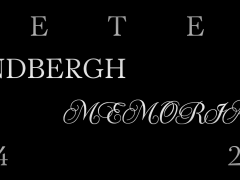MKG presents the Poster: 200 years of art & history on the wall
With nearly 400 exhibits by around 200 artists and designers, the exhibition The Poster: 200 years of art & history at the Museum für Kunst und Gewerbe Hamburg (MKG) offers a large-scale, representative overview of the history of the poster from its beginnings in the early nineteenth century to today.
The poster was a love affair for MKG since the museum's early days as the Poster Collection maintained by MKG is – even by international standards – one of the oldest and most important collections of its kind.
And it is thanks to the museum’s founder Justus Brinckmann (1843-1915), a man who actively observed the cultural developments of his time and was eager to integrate contemporary phenomena into his new museum.
"The poster became one of the leading ways to disseminate information and a popular type of pictorial media throughout the world in the 19th century" notes the museum of a collection of posters more rare than one would initially assume, as "once they are posted on a wall, they are covered with other print material or painted over ten days later, and thus the posters are lost to posterity."
A poster collection needs to be established in order to preserve what would otherwise be lost adds MKG with a poster collection that reflects the history of the the medium in all its glory.
"Art and history, design and advertising meet in this medium. Posters accompany political events as well as film and theatre history. They document social developments while also reflecting changing artistic styles" notes the museum of the exhibition which runs through 20 September 2020.
"Campaign posters feature portraits of politicians and concert posters those of musicians, manufacturers advertise new products and the tourist industry the most beautiful destinations – even websites are being promoted today with posters. There is no other art genre that pervades our everyday lives to such an extent.
The notable Polish poster artist Jan Lenica said in 1966: 'The poster undoubtedly has a function, it has a mission, and it must do justice to this duty. But its meaning lies not in what it is supposed to convey but in what it has to say.' And good posters send a multi-layered message that goes beyond mere advertising to make a statement on the times, on design, and on history, fashion, or taste. This is the 'added value' that can turn a poster into a work of art."
Posters experienced a heyday around 1900 in the era of Art Nouveau, later with the Art Deco style and the avant-garde movements of the 1920s, and again in the 1960s.
Whenever art and everyday life converge, as in Art Nouveau, in the Bauhaus period, or in Pop Art, the boundaries between applied and fine art become blurred.
This has given rise to posters that are still admired today as artistic highlights of their time.
Examples include the famous lithographs by Toulouse-Lautrec and Alfons Mucha, as well as, thirty years later, the movie posters by the Stenberg brothers in Moscow and Cassandre’s compositions in Paris.
The exhibition presents the leading poster artists, most of whom are known far too little in Germany, and their characteristic and important works."
"Das Plakat. 200 Jahre Kunst und Geschichte" (The Poster: 200 years of art & history) is kindly supported by the Hubertus Wald Stiftung, the Ernst von Siemens Kunststiftung and the Zeit-Stiftung Ebelin und Gerd Bucerius.
Explore more here.
Tags/ exhibition, poster, museum, art nouveau, bauhaus, pop art, hamburg, museum für kunst und gewerbe, jan lenica






























